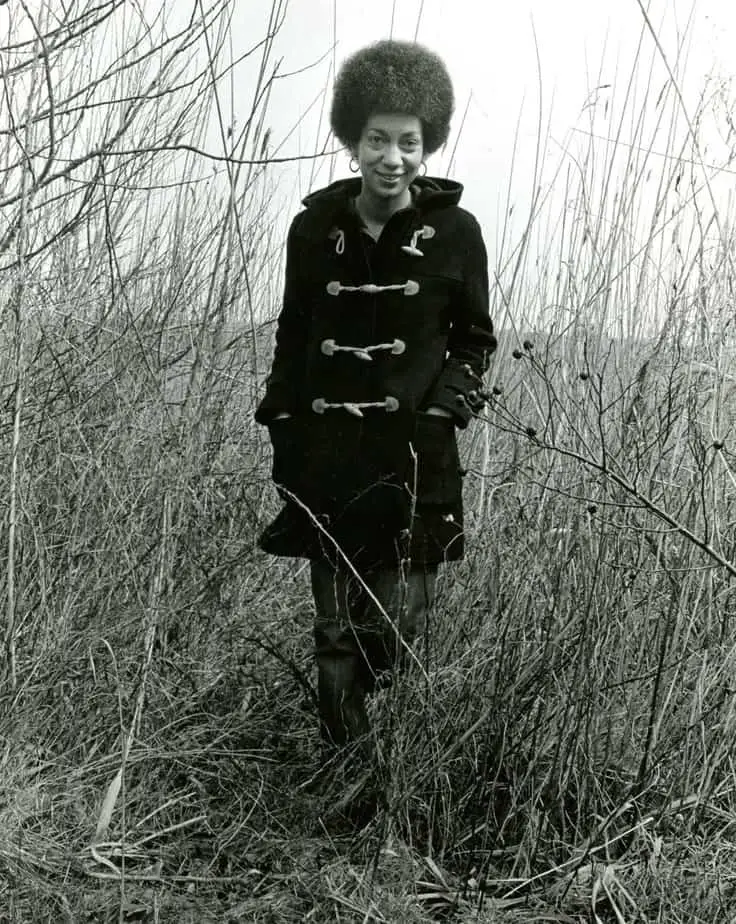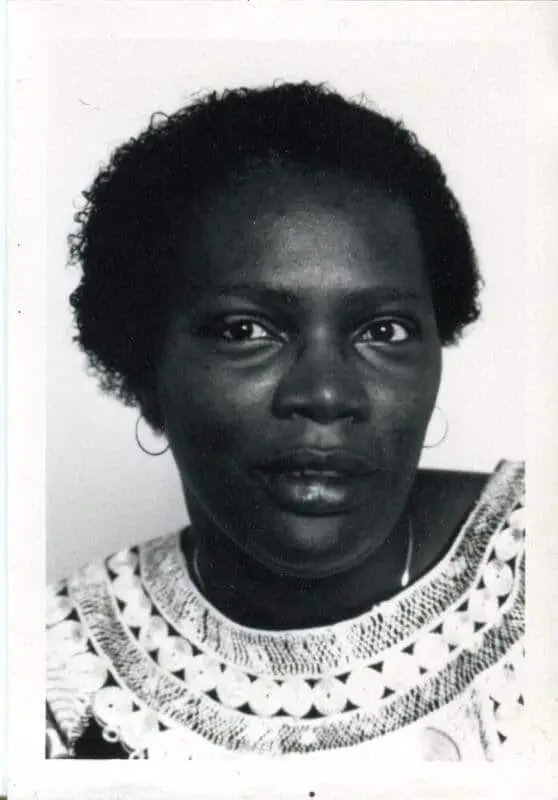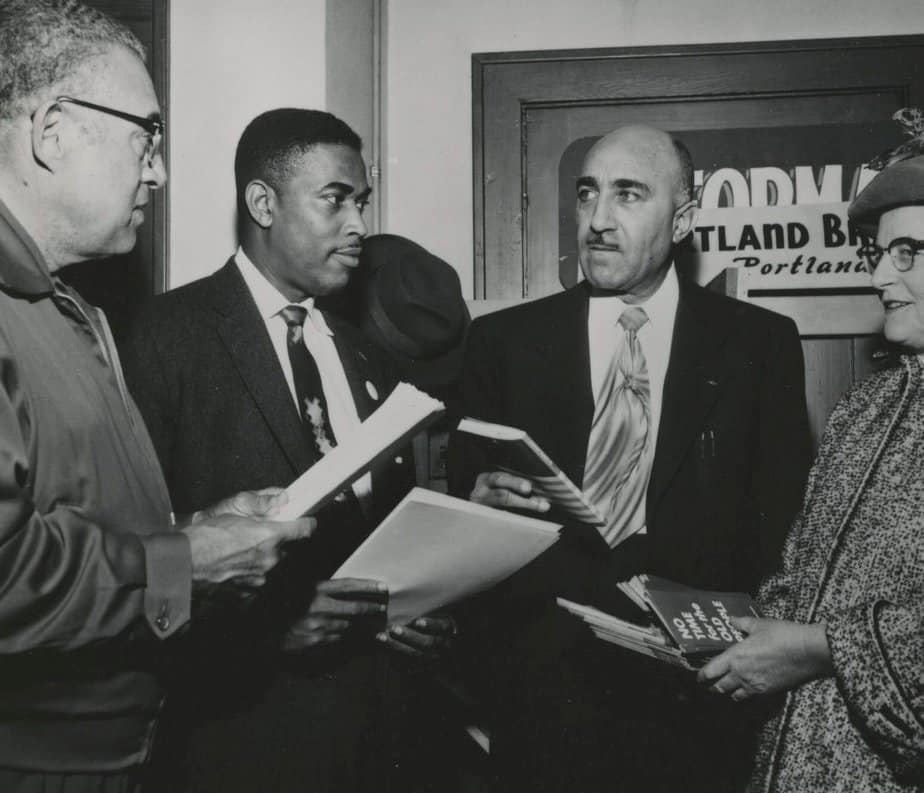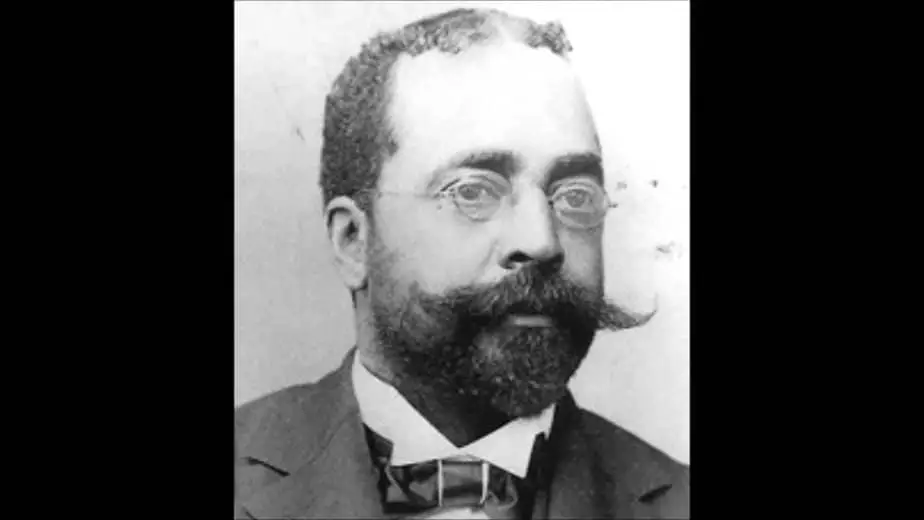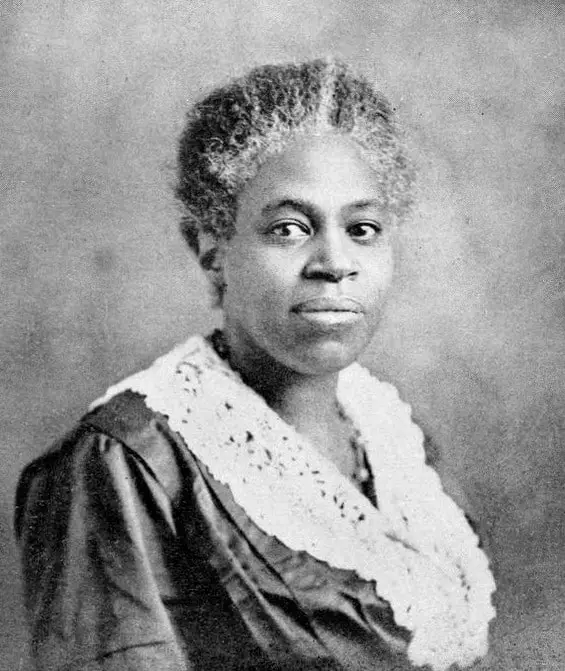We wanted to showcase five important Black leaders throughout Bay Area history. And not just political leaders, but leaders in their respective field(s). The trailblazers, the door openers, and the change-makers. Let their legacy inspire us to do more for the Black community, in the Bay and beyond.
June Jordan
June Jordan was a Jamaican-American poet, activist, essayist, journalist, and teacher. Although she was born in Harlem, Jordan moved to the Bay Area, where she became a full professor in African-American Studies, English, and Women’s Studies at UC Berkeley, from 1989 to 2002. There, she founded the “Poetry for the People program,” to inspire others to share their world and their views through poetry.
In her own work (over 25 published books), June Jordan made it a point to use Black English, validating it, sharing this part of African-American culture, and not conforming to what other poets were doing. She also tackled topics such as gender, politics, Blackness, privilege, sexuality, race, gender identity, immigration, and class.
Today, as we are moving to rename San Francisco schools in honor of iconic African-Americans, there is the June Jordan School of Equity, a high school in the Excelsior.
Pat Parker
Another African-American woman who used words to express what was happening in the world is lesbian feminist poet and activist Pat Parker. In addition to publishing five collections of poetry, Parker also formed the Women’s Press Collective in 1980, directed the Feminist Women’s Health Center in Oakland, and was involved in Black Panther Party, and the Black Women’s Revolutionary Council.
Pat moved to Oakland in the early 1970s, and graduated from San Francisco State University. Like June Jordan, Pat Parker was inducted onto the National LGBTQ Wall of Honor at the Stonewall Inn.
C.L. Dellums
C.L. (Cottrell Laurence) Dellums arrived in San Francisco from Corsicana, Texas, in 1923, choosing it for its schools, but also because to him it seemed like the ideal place for a Black man to live in the United States. His plans were to become a lawyer, but C.L. ended up working for the Pullman Company as a porter, which would lead to his life’s work. Seeing the conditions and low wages that porters were making, Dellums joined the Brotherhood of Sleeping Car Porters. His support of unions led to him being fired, but C.L. ended up becoming the Brotherhood’s International President.
In addition to fighting for train workers’ rights, C.L. Dellums also was part of starting the Oakland Voters League (OVL), as well as fighting for Black WWII industry workers by being a key organizer of the first March on Washington (in 1941), and joining California’s Fair Employment Practices Committee (where, in 1960, he became its first African-American chairman). Another first for Dellum was being chosen as the NAACP’s first West Coast Regional Director, where he continued to speak up for African-Americans in other spaces, boycotting the use of blackface on the Amos ‘n’ Andy Show.
C.L. Dellums’ impressive legacy no doubt inspired his grandson, Ron Dellums, who was Oakland’s mayor, from 2007 to 2011. Today, you can visit the C.L. Dellums statue at his namesake Oakland Amtrak station, and attend the C.L. Dellums African American Leadership School at the U.C. Berkeley Labor Center.
William Leidesdorff
Did you know that the first Black millionaire has ties to San Francisco, and California at large?! (These are the things that should be part of our U.S. history classes in school.) Yes, William Alexander Leidesdorff, Jr., who was also Latinx (he had an Afro-Cuban mother), was born in the Dutch West Indies (today’s St. Croix) before heading to California. A merchant and sea captain, he made his way to San Francisco in 1841, becoming one of SF’s founders. There, he built the city’s first hotel, the City Hotel, the first commercial shipping warehouse (for his import-export business, on a street that became Leidesdorff Street), launched the first steamboat to operate on the Bay, was the first Treasurer, was the US Vice-Consul to Mexico at the Port of San Francisco, and one of the three members of SF’s first school board (where he served as President), leading to the city’s first public school.
In addition to his business ventures, William owned property in San Francisco and Sacramento, Hawaii, Louisiana, Alaska, New York (around the time of the Gold Rush), helping to increase his wealth, and making him the richest man in San Francisco, one of the wealthiest men in California, and of course, the first Black millionaire–ever.
Delilah Beasley
Before Oprah, Ilia Calderon, Marvel Jackson Cooke, and Alice Allison Dunnigan, there was the trailblazing of historian, writer, activist, and author Delilah Beasley. Writing a weekly column for the Oakland Tribune, called “Activities Among Negroes,” from 1923 to 1934 (the year of her death), she became the first Black woman to “be published regularly in a major metropolitan newspaper.” This column highlighted African-Americans and their achievements while sharing their struggles, and bridging the gap between the Black and white communities. Delilah stated:
“Every life casts its shadow, my life plus others make a power to move the world. I, therefore, pledge my life to the living world of brotherhood and mutual understanding between the races.”
Beasley was also the first person to chronicle Black excellence, and Black California pioneers, in her books SlaveryinCalifornia (1918), and TheNegroTrail-BlazersofCalifornia (1919). This was after having studied in hairdressing, hydrotherapy, medical-gymnastics, massage therapy, and nursing. In addition to this impressive work, Delilah Beasley was a member of the NAACP, the Oakland Council of Church Women, the National Association of Colored Women (NACW), the Alameda County League of Women Voters, was President of the Far Western Inter-Racial Committee at the Oakland Museum, and more.
